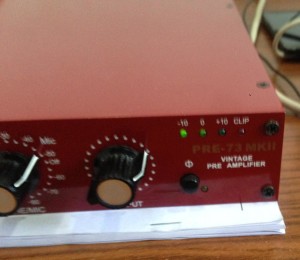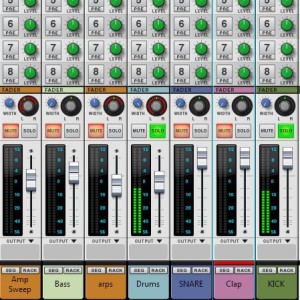Have you tried to mix your own song? Maybe 99% of you would think that it’s not as perfect as the mix done by your favorite producers out there. “Most of them done it by themselves, I’m using exactly the same techniques and sounds as they done, but why it doesn’t sound as good as theirs?”
A common question that might asked by you or your listeners. Having a great mix is every musician’s goal, and it’s clearly possible to reach. You slide the fader’s off your virtual mixer, give them some effects, trying to get the perfect balance, but apparently it’s hard to sound right, then you end up revising your mixes while slowly lost your precious time over time.
How about home production mixes? Will it make any difference by doing the mix by all yourself than mix by professionals? With the advanced developing technology and the magic of the realms of Digital Audio Workstation softwares now finding ways on having a good mix, easier. There are also tons of tutorial out there on every kind of mixing and mastering problem for you to read.
We have several tips (maybe it’s basic, but we prefer to call them “fundamental”) which could help on getting your home production mixes sounds just like you wanted. These are not an absolute guideline to be strictly followed step by step. Mixing is an art, which is need an in-depth interpretation of the engineer’s sense to the music. Other suggestion by another engineer on several mixing tips is also not an absolute line you should walk into.
Everyone has a different way of thinking and interpretation towards how the track should be mixed and mastered. There could be arguments and debates on how to get the right mix, but the original satisfaction comes from the engineer or in another words, the man behind the gun. These several tips could be basic things, which could help you. Read on!
- Good Source is Everything
Before starting the mixing and mastering, it’s better to have a good source/material used on your track. Doing the mix is not a magical process where you can fix sounds with clippings/distorts/over compressed sounds using an advance music production software to a clean and smooth sound on the final mix. Be sure check your instruments one by one for peaks or clippings or other problems before you do further editing to your mix while having an enough power (gain) to start with, whilst having a good preamp just before the recording chain can be helpful. Bad source at the start would still be bad in the end. Some musicians or producer intentionally distort their own sound at the first recording phase to get a certain sense. That’s a different story that requires further understanding on how to get the track properly mixed, but with an unintended error on the source wouldn’t be good for you to work with.
- Solo Fixes
When you mix multiple instruments, it would be hard to see what’s wrong with the mix, or which channels which has a unwanted frequencies. It’s better to solo each track on the DAW mixer to analyze in detail if there’s anything you missed. There could be something bothering such as vocal sibilance or else that doesn’t sound like it supposed to be. It’s better to check it all thoroughly before you do any mix further. Nothing you can do to fix individual instruments at the final mastering process. So, that’s why mix process it’s so vital.
- Stage Your Mix
Just like when you do those “solo fixes” process. It’s hard to assess things when you listen to cluttered sounds all together. You are the director of your mix. It’s a lot better and will make your work easier when you know when and where each sound starts to fade/punch in or out. What to be on the background and what to be on the front. Works for middle and sides too. Use that dimension of space on your mind to stage each sound. There are several ways and tools to make your instruments stands out in the mix by putting them in certain position. Give them their own space on the mix. You could enhance the stereo imaging of your strings using a spatial enhancer to give more space in the middle for other instruments. Or do it in the opposite way to put another instruments on the side. Pan some of those instruments to the left or right could help them stands out even more. Adjusting volume fader to give a certain depth is another way you could try. All of it would add different senses or story to the mix rather than letting all the sound gathered up in the center colliding with each other. Better crowd control would bring order to your mix.
- Bounce The Mix/Submixes
After going through each instruments on the earlier process of mix, bouncing similar instruments to a stereo mix for further edit would make your work easier and more “In-order”. Putting a compressor on each drum track would consume the CPU and your time. Grouping those drum tracks to a submix/stem and put one stereo compressor on it would be a lot better. You could do the same grouping process to guitars or backing vocals. This process is a time saver, but if you want to do a meticulous editing on each of the sound is totally okay. But with every choice, there are consequences. Just pick the way that you need the most to get the best out of your mix.
- Subtractive Mix
Subtracting the EQ on the mixing process is probably better than adding it up. Can you imagine if you’re adding up EQs on each instrument of your mixes? Eventually your mix would sound louder. Then you’ll face another problem. Your mix doesn’t have the room to breathe for the final process. There are tons of EQ and other audio plugins you could use on this process. Subtractive mixing will give your overall mix enough headroom, the space it need for the final process later.
- References
Having a reference of how your instruments and tracks sounds the way you wanted on you mix would help a lot. With this references, you’re having a clear idea of what to do on shaping your mix. Either on getting the strings sounded pretty much similar or maybe getting the overall mix to sound pretty much the same. Don’t be afraid to do some experiments doing the mix to several versions out of your track. Sometimes it could give you a brighter idea to get a “right sound.”
- Enough Rest for Your Ears
Give your ears enough rest. Ear fatigue will not be good to judge anything out of your mix. Give a day or two to give your ear enough vacation on not exposed to loud sounds. Surely you don’t want to damage your precious asset on audio world.
- Give It A Listen to Another Person
Doing the mix for a long time in the process could make yourself pretty much isolated to better ideas or solutions. You could stop at some point and let another person listen to what you’ve done on your mix. They could be a professional musician or audio engineer, even to a common person with zero knowledge on audio/music production expertise. Sometimes they can come up with suggestions and comments, which never crossed your mind before.
- Different Speakers or Headphones
After you did the mix and reached your first satisfactory point, you could try playing your track(s) on a proper studio. Or play it on your friend’s place with proper tools for professional quality mixes. There would be differences for sure. But that is the point. Adjusting the gap of big differences on several parts of your mix to be judged and edited on the next mix. It won’t be as similar as how you have it on your own place, but it is better to have your track played on several kind of speakers to get minimal differences out of it. Analyze your mix in details. Sit or stand a bit further to the back to analyze the low end, check on your high frequencies for annoying resonant or sibilance.
Does it always have to be speakers? Not really. If you’re working on headphones, you could try having a listen to your track on different pair of headphones. But remember, use professionally made headphones since each of them have different characters. Professionally made headphones or speakers are a lot better to be used as an output reference for your mix. This process might take you back to your journey on getting the best out of your mix by doing further editing according to your latest assessment.
- Not Finished, Yet
Don’t jump to conclusion of “Final” or “Finished” mix too fast. After giving your ears a rest, several suggestions from your friends and added with your own assessment from different listening devices, surely you’ll be having another thing that need to be fixed. Give your overall mix a listen. Do multiple time of listening with different volume level. Does the mix sound like you wanted to? There could be a thing or two catches your attention. Should you get back to the mixing process again? Is it necessary? Is it a major problem if you don’t fix it? Doing the mix could take various time spent. It could take hours or days, or even months. All you need to have is your own satisfaction towards your own mix. If there’s nothing left to do, you could go straight to the final process.





